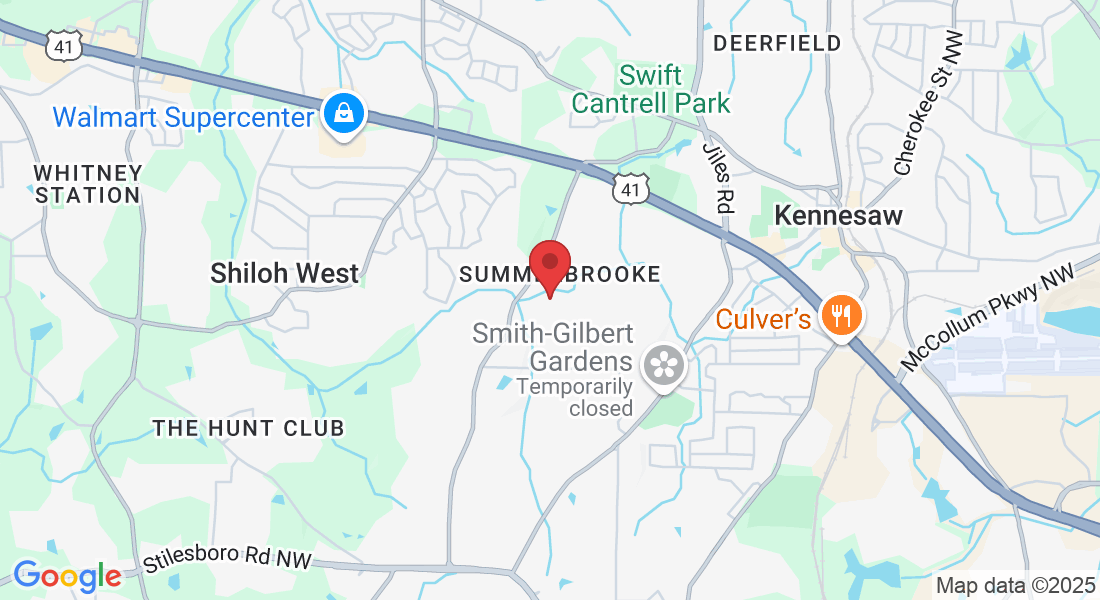Mon - Fri:
8:00AM - 10:00PM
3155 Brookeview Lane NW

BLOG
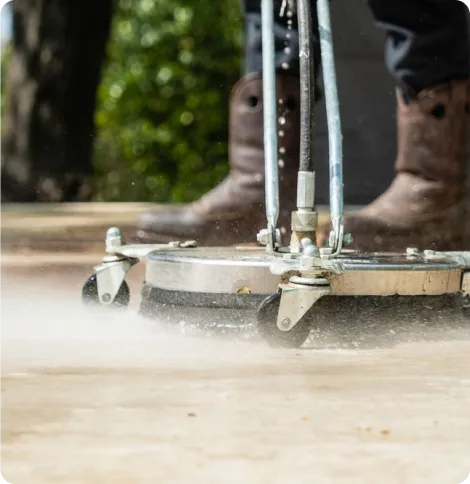
Surfaces You Must Clean While Pressure Washing Your Home
Important Surfaces for Effective Pressure Washing Your Property
Introduction
When it comes to maintaining the curb appeal and longevity of your property, tidal wave pressure washing has become an indispensable service. Power washing not only improves aesthetics but also removes dirt, mold, and other contaminants that could cause damage over time. If you’re considering advanced cleaning methods, contact us for professional advice tailored to your needs. You might wonder what specific surfaces need a professional touch and how best to prepare these surfaces before the cleaning process begins. In this article, you will discover a detailed guide on how to identify the right surfaces for effective power washing projects. We explore the characteristics of porous and non-porous surfaces, the techniques to optimize cleaning performance, and the safety and environmental considerations you should keep in mind. By understanding these key areas, you can ensure that your power washing project is both efficient and long-lasting, providing excellent value whether you’re a homeowner, commercial property manager, or real estate agent.
This article is designed to help you initiate the process with a clear understanding of the challenges different surface types pose, the preparatory steps that need to be taken, and the subsequent techniques that guarantee optimal power washing results. From the patio and driveway to delicate exterior facades, each surface requires its own tailored approach. Not only will you receive actionable insights and data-backed methods, but you’ll also be guided through creating consistent maintenance and improving the lifespan of your property’s various exterior surfaces. As we delve into the specifics, you'll learn practical tips on debris removal, the importance of protective coatings, and how to choose the best cleaning patterns combined with the right pressure levels.
Effective power washing is more than just spraying water at high pressure; it is an engineered process that plays a crucial role in preserving the structural integrity and beauty of your property. With increasing concerns about water conservation, environmental impact, and safety risks, it becomes even more essential to understand and plan your cleaning projects meticulously. This in-depth overview will equip you with the necessary knowledge to make informed decisions about the surfaces in your property that require power washing, how to prepare them, and which techniques yield the best results. By the end of this article, you will have a well-rounded understanding of the subject, allowing you to contact local power washing companies with confidence and request a fast quote that meets your project specifications.
Transitioning from an understanding of why power washing is important to learning how to do it effectively, we will next summarize the key insights of this article in a brief section designed to give you a snapshot of the crucial points.
Key Takeaways
Power washing optimizes the appearance and durability of various surfaces by removing contaminants that cause deterioration.
Proper identification, preparation, and technique selection are essential for effective and safe power washing.
Environmental impact and safety should always be considered, with protective measures in place.
Regular maintenance and scheduled cleaning can significantly extend the lifespan of surfaces and enhance property aesthetics.
Identify Key Surfaces for Effective Power Washing Projects
Understanding which surfaces will benefit most from a power washing service is crucial. In your property, surfaces fall into two major categories: porous and non-porous. Porous surfaces such as wood, stucco, and certain types of brick are characterized by their ability to absorb water and cleaning agents into small openings or capillaries. The additional absorption makes them more vulnerable to water damage if not cleaned with the proper technique. For instance, excessive water penetration in wooden decks can lead to warping or rotting if the wood is not pre-treated with water repellents before cleaning. It is important to assess the material type and condition to decide on an appropriate water pressure that will remove stubborn deposits without compromising the integrity of the surface.
In contrast, non-porous surfaces such as metal, vinyl siding, and certain types of plastic have a smooth surface area where water cannot penetrate easily. They can typically withstand higher pressure levels and stronger cleaning agents. However, even these surfaces require careful consideration regarding the cleaning method. For non-porous surfaces, high-pressure washes remove accumulated dirt, grease, or mildew effectively, but if the pressure is too high, the risk of surface damage, such as chipping paint or denting metal, increases significantly. Evaluating the material properties, such as the underlying composition and age of the structure, ensures that you are using a balanced water pressure and cleaning agent tailored to the surface.
It is also important to compare the type of surface that you plan to power wash with the expected results. The technique used for a concrete driveway will be different from that for a delicate wooden porch. For instance, concrete surfaces may require a combination of pressure washing and specialized cleaning solutions to eliminate stubborn stains caused by oil or rust. When cleaning masonry or brick surfaces, it is crucial to avoid water infiltration that could lead to efflorescence or internal damage. In all cases, consulting with professional power washing companies regarding the nature of your surfaces can save you time, money, and potential repair work later.
Furthermore, different surfaces like decks, patios, and sidewalks have varying levels of exposure to elements such as sun, rain, and debris. Porous surfaces frequently accumulate organic matter such as leaves and mold, while non-porous surfaces may be more prone to oil-based stains from vehicles. Comparing these attributes underlines the necessity to choose specific power washing techniques for each surface category. Homeowners often find that surfaces with high porosity require gentler cleaning methods with lower pressure and specialized detergents designed for wood or stone, while non-porous surfaces tolerate the use of high-pressure settings for deep cleaning.
By linking these assessments with practical preventive measures, such as protective coatings and repair protocols, you can ensure that your property remains in optimal condition. This comprehensive approach not only enhances the overall aesthetic appeal of your home or commercial property but also improves its structural resilience, making it a smart investment in long-term property maintenance.
Prepare Your Surfaces Before Power Washing Service
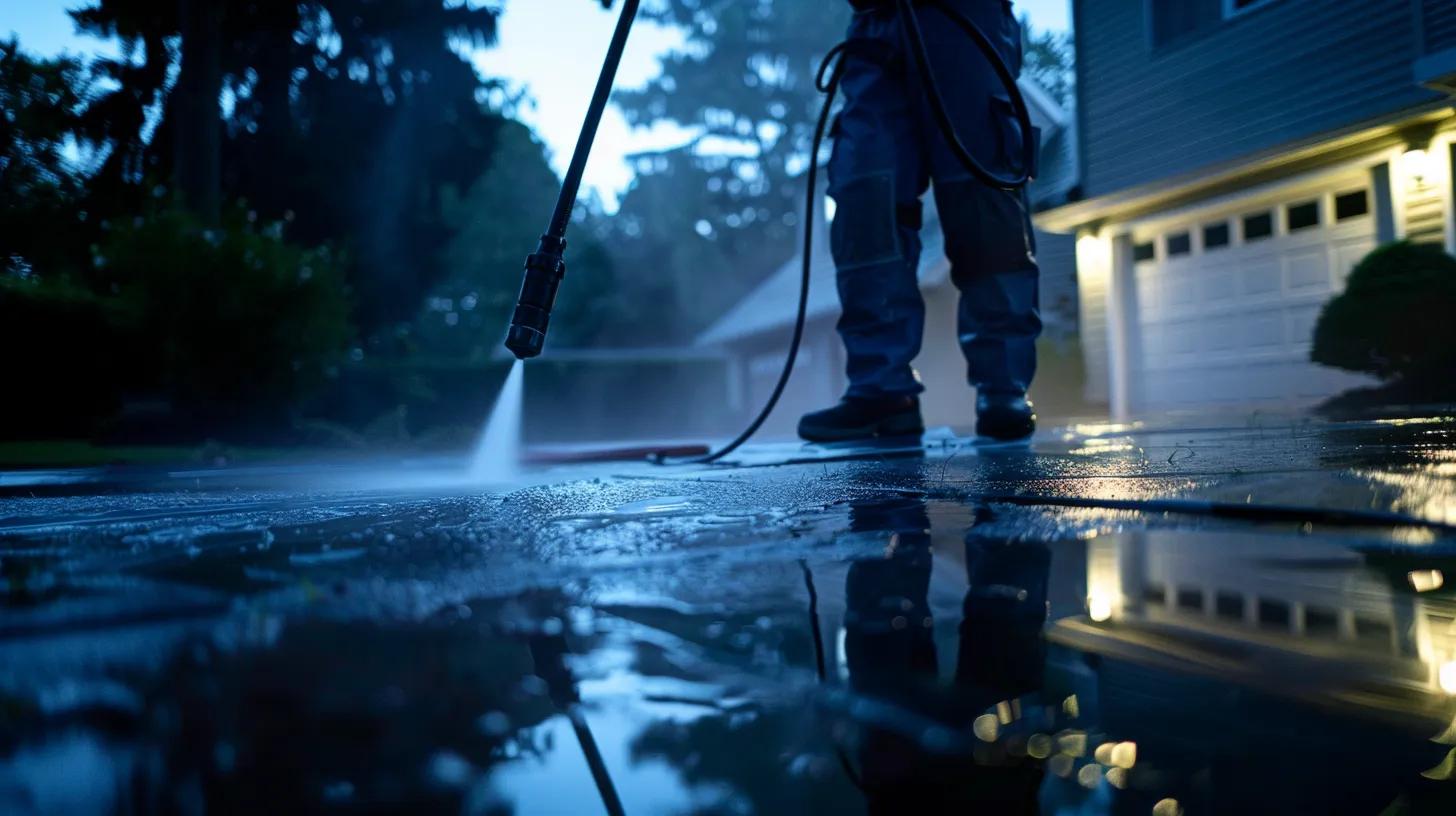
Before you start the power washing process, properly preparing your surfaces is essential. The first step in preparation involves clearing all debris and outdoor furniture from the cleaning areas. Loose items such as garden tools, potted plants, and patio furniture must be relocated to prevent damage from the high-pressure spray. Additionally, removing loose debris not only avoids clogging the pump system but also allows the washer to have unobstructed access to the surface, facilitating a more thorough cleaning.
Next, applying protective coatings in areas that are more vulnerable is highly recommended. Surfaces that show signs of aging or have delicate finishes, like stained wood, can benefit from water-repellent agents and sealants developed specifically for exterior use. These coatings provide an extra barrier, reducing the risk of water penetration after the washing process is completed. For instance, a freshly sealed wooden deck can better resist water-induced warping and rot, preserving its appearance and strength for a longer period.
In addition to debris removal and protective measures, it is crucial to inspect and repair surfaces for any pre-existing damage. Cracks in concrete, chipped paint on wooden facades, or areas of mildew accumulation should be addressed prior to power washing. Repairing these issues beforehand prevents further damage during the power washing process. For example, sealing cracks in the driveway not only enhances the cleaning outcome but also improves the overall structural integrity of the surface by stopping moisture from infiltrating and causing additional decay.
A checklist becomes an indispensable tool in this phase. Creating a cleaning checklist that lists all outdoor surfaces, the required preparatory steps, and designated repair needs helps ensure that nothing is overlooked. This methodical preparation paves the way for a smoother, more effective power washing process and reduces the likelihood of unexpected interruptions or damages.
To further guide you through the preparation process, consider the following detailed steps: - Clear Debris and Outdoor Furniture From Cleaning Areas: Walk around your property and remove any loose objects that might interfere with cleaning. This step is critical for both the safety of your items and the effectiveness of the power washing. - Apply Protective Coatings on Vulnerable Areas: Use appropriate sealants or water-repellent treatments on surfaces that are prone to damage. This will safeguard sensitive materials such as wood, stucco, or painted surfaces from excessive water penetration. - Inspect and Repair Surfaces for Better Cleaning Outcomes: Conduct a thorough examination of all surfaces to identify any signs of deterioration. Take steps to perform minor repairs, such as patching cracks and touching up chipped areas, to support the overall longevity of your cleaning efforts.
An organized preparation phase not only safeguards your property but also enhances the cleaning efficiency by ensuring that the surfaces are receptive to cleaning agents. This results in a more uniform cleaning process that maximizes the visual appeal of your home or business while also extending the lifespan of its exteriors.
Furthermore, preparing your surfaces carefully can save you money in the long term by avoiding costlier repairs that might result from improper cleaning practices. Power washing is a critical maintenance practice that, when done correctly, enhances property safety, improves aesthetics, and contributes to higher property values. Ensuring that you follow all preparatory steps thoroughly is therefore an investment in the lasting beauty and durability of your property.
Choose the Right Power Washing Techniques for Effectiveness
To achieve superior cleaning results, selecting the right power washing techniques is essential. The first decision involves choosing the appropriate nozzles designated for various surface types. Nozzles come with different spray patterns and pressure outputs, and using the wrong type can lead to unsatisfactory cleaning or even unintentional damage. For instance, a 25-degree nozzle may be effective for non-porous surfaces like vinyl siding, whereas a 40-degree nozzle might be better for delicate surfaces to ensure gentle cleaning.
Adjusting pressure levels based on the surface material is another critical factor. Different materials respond uniquely to various pressure levels. When cleaning hardened surfaces like concrete or brick, a higher pressure setting might be necessary to dislodge stubborn dirt and grime. Conversely, surfaces like wood or painted exteriors can suffer from excessive pressure, which may result in surface erosion or peeling. Therefore, you need to calibrate the pressure settings according to the specific requirements of each surface to avoid damage while ensuring adequate cleaning.
Following an efficient cleaning pattern is also paramount for achieving uniform results. An organized method of scanning across the surface ensures that every section is addressed and that there is no overlap or missed spots. Typically, starting at the top and working your way down is advisable, as gravity assists in washing away the loosened debris. Maintaining a consistent distance between the nozzle and the surface, usually around 12 to 18 inches for most applications, is also necessary for a uniform cleaning outcome.
It is equally important to consider the type of cleaning solution mixed with the water. Some surfaces may require a detergent or degreaser to help break down oil, mildew, or grease prior to the pressure application. Using the correct detergent not only enhances the cleaning efficacy but also reduces the amount of physical pressure needed, thereby protecting delicate surfaces.
Many professional power washing companies use a combination of specialized nozzles and tailored pressure settings to optimize their cleaning process. For example, commercial cleaning experts often switch between multiple nozzle types and adjust settings on a multi-functional power washer to tackle different areas of a single project. This technique is particularly useful when dealing with properties that feature a variety of surfaces, such as a home with a mix of vinyl, concrete, wood, and brick.
Furthermore, selecting the correct cleaning pattern can significantly reduce water usage and thus minimize environmental impact. An efficient cleaning pattern, such as a side-to-side or circular motion, ensures that water is used effectively, reducing waste while maximizing contact time between the cleaning solution and the surface. This meticulous approach is critical in regions where water conservation is a concern.
Below is a table summarizing common techniques and corresponding recommendations for different surface types:
Surface Type
Nozzle Recommendation
Pressure Range (PSI)
Cleaning Pattern
Additional Tips
Wood / Decking
40-degree
1000-1500
Side-to-side sweep
Use eco-friendly detergents; maintain a distance of 18 inches
Stucco
25-degree
1500-2000
Circular motion
Pre-treat with a mild cleaning solution to avoid peeling surfaces
Brick
15-degree
2000-2500
Horizontal strokes
Use degreasers for oil stains; keep nozzle perpendicular to surface
Vinyl Siding
25-degree
2000-2500
Overlapping passes
Avoid spraying too close to prevent dislodging caulk
Concrete
15-degree
2500-3000
Zigzag pattern
Utilize a degreasing agent for stubborn stains; keep even distance
Metal
40-degree
1500-2000
Consistent sweeping
Use corrosion inhibitors for painted surfaces; avoid high pressure
This table serves as a useful reference to help you tailor your power washing project to the specific needs of each surface. By understanding the different nozzle types, pressure ranges, and cleaning patterns, you can confidently tackle the cleaning process with a strategy that maximizes both effectiveness and safety. With proper technique selection, you reduce the risk of surface damage while achieving a sparkling clean finish that enhances your property's overall appeal.
Incorporating these refined techniques not only improves immediate cleaning results but also contributes to a longer-lasting appearance for your surfaces. This procedural consistency is one of the hallmarks of professional power washing practices and is essential for residential and commercial projects alike. When you schedule a power washing service, seek out providers who demonstrate expertise in these techniques, as their knowledge will translate into better performance and higher property satisfaction.
By integrating detailed planning, the correct cleaning supplies, and the exact techniques as outlined, you set the stage for successful cleaning outcomes that protect your investments and amplify property value. It is advisable to always consult with experienced local pressure washing companies who are familiar with regional weather patterns and water regulations, ensuring that your project is not only effective but also compliant.
Consider Environmental Impact When Power Washing
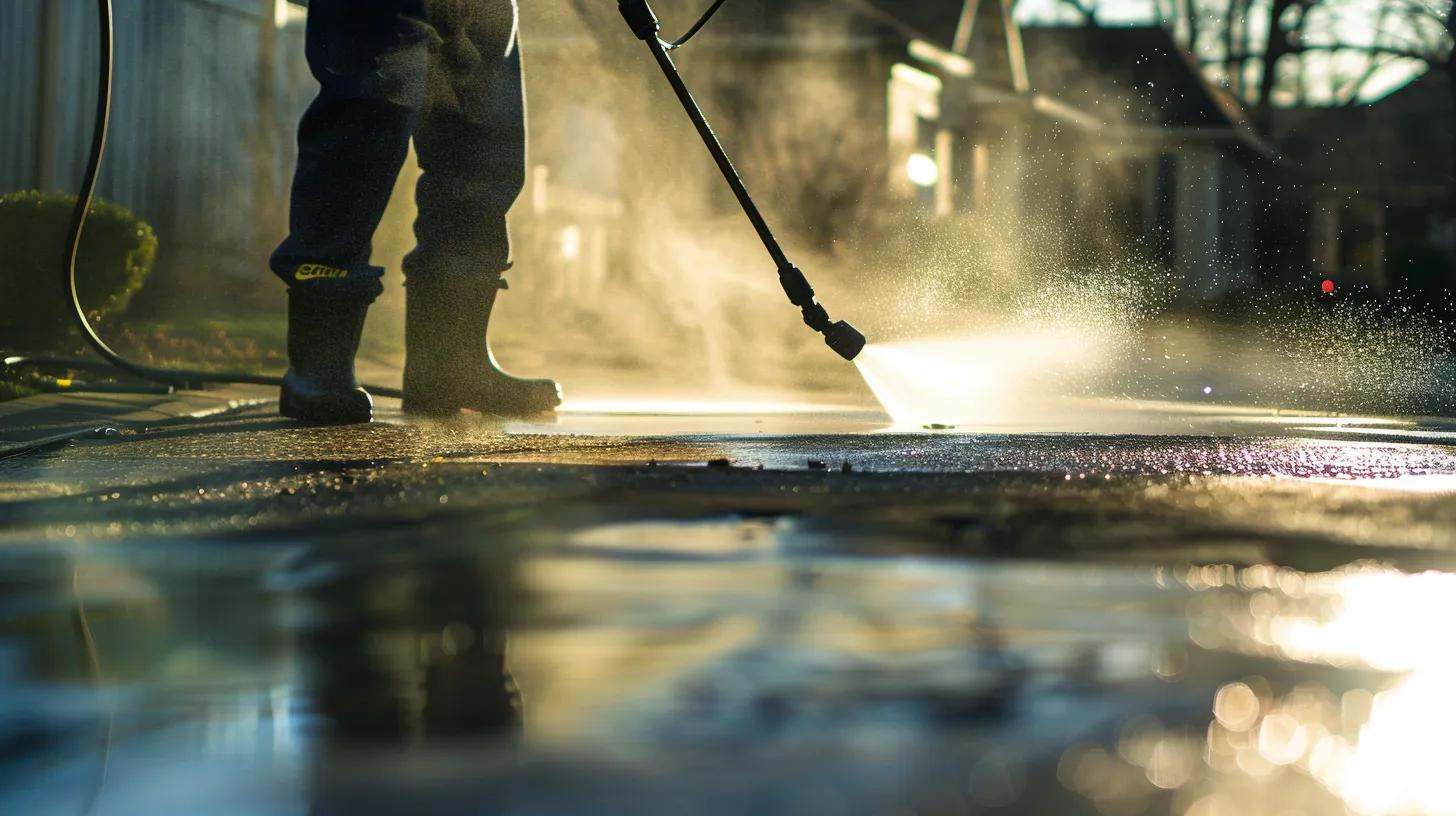
In today’s environmentally conscious world, considering the environmental impact of your power washing project is as important as achieving a clean surface. The first step in minimizing environmental impact is choosing eco-friendly cleaning solutions that are safe for both your property and the surrounding ecosystem. Many conventional cleaning agents contain harsh chemicals that can damage plants, wildlife, and even water sources. Therefore, opting for biodegradable detergents and green cleaning agents is essential to reduce runoff toxicity and water pollution.
Another important factor is managing water usage. Power washing typically consumes a significant volume of water, so using strategies that limit waste is vital. Modern pressure washing equipment often features adjustable flow settings which allow you to use just enough water to get the job done. Additionally, techniques such as pre-soaking the area can help loosen grime, reducing the need for prolonged water spray. By managing both the volume of water and the duration of use, you can considerably lower the environmental footprint of your cleaning project.
Proper disposal of wastewater is another critical consideration. Depending on the cleaning chemicals and the debris washed away from your surfaces, the runoff water can contain contaminants that must be disposed of in accordance with local environmental regulations. It is recommended to consult with professional power washing providers about the disposal process to ensure that the wastewater is treated or filtered before being discharged. Some companies even employ wastewater reclamation systems that recycle the used water, making the entire power washing process more sustainable.
The environmental benefits of mindful power washing extend beyond water conservation. By using eco-friendly cleaning solutions, you not only protect local waterways but also reduce the risk of harming beneficial insects and plants in your landscape. Such integrated measures contribute to a healthier environment and promote sustainability practices among local property owners. Additionally, minimizing chemical use also reduces the potential for adverse health effects on those doing the cleaning and nearby residents.
Below is a list that summarizes your key environmental considerations when planning a power washing project: 1. Select Eco-Friendly Cleaning Solutions – Use biodegradable and non-toxic detergents that minimize chemical runoff and protect local flora and fauna. 2. Manage Water Usage – Adjust flow settings, pre-soak surfaces, and use water-saving techniques to reduce water consumption. 3. Dispose of Wastewater Properly – Follow local regulations for treating and filtering wastewater to prevent environmental contamination. 4. Utilize Reclamation Systems – Opt for services that recycle and treat used water, further lowering the environmental impact. 5. Monitor Chemical Residue – Ensure that no harmful residues are left behind that could affect soil health or water quality. 6. Schedule Maintenance Wisely – Clean during cooler parts of the day to minimize rapid evaporation and reduce water waste. 7. Consult Local Experts – Work with professionals knowledgeable about regional environmental regulations and best practices.
Adopting these measures ensures that your power washing not only revitalizes your property but also contributes positively to the broader environment. With sustainable practices in place, you align your property improvement goals with ecological preservation, creating a win-win scenario for both your property and the natural world.
In many regions today, environmental regulations are becoming increasingly strict. Hence, taking proactive steps in managing wastewater and reducing chemical usage is not only responsible but may also be required by law. By integrating these considerations into your project planning, you ensure that your cleaning efforts are safe, efficient, and legally compliant.
Moreover, environmental stewardship in power washing highlights your commitment to sustainability and can even improve your standing as a property owner. Whether you are seeking to boost home value, appeal to eco-conscious buyers, or simply reduce your environmental footprint, following these guidelines results in high-quality, sustainable cleaning that preserves natural resources while enhancing your property’s appearance.
Ensure Safety Precautions During Power Washing
Safety should always be a top priority during any power washing project. The high-pressure water streams and powerful cleaning agents used can pose risks not only to your property but also to the people performing the work and those nearby. Therefore, it is crucial to institute comprehensive safety measures before starting any power washing tasks.
The first safety precaution is to wear protective gear at all times. Safety goggles, gloves, non-slip boots, and ear protection are essential to protect you from flying debris, high-pressure water jets, and the loud noises associated with power washing equipment. These items serve to minimize the risk of accidental injuries and provide a critical defense against potential hazards in case something goes awry during the cleaning process.
In addition to personal protective equipment, it is important to ensure that others are kept at a safe distance from the work area. Clear the area of bystanders, children, and pets. Even a momentary lapse in focus can result in injury when high-pressure streams are involved. Clearly mark off the cleaning zone and post warning signs if necessary. This precaution not only enhances personal safety but also minimizes the risk of property damage to neighboring items or vehicles.
A thorough check of the equipment for proper functionality before use is another mandatory safety step. Inspect hoses, nozzles, pressure regulators, and all connections for leaks, fraying, or other issues. Faulty equipment can lead to sudden malfunctions, potentially causing injury or property damage. Maintaining a regular maintenance schedule for your power washing tools contributes significantly to a safer cleaning environment.
It is also advisable to conduct a brief risk assessment before beginning any work. Identify potential hazards, determine what corrective actions may be needed, and prepare an emergency plan. This risk management approach helps ensure that if an accident does occur, you are well-prepared to handle the situation calmly and effectively.
Below is a numbered list that outlines important safety precautions to consider before starting a power washing project: 1. Wear Protective Gear – Always use safety goggles, gloves, ear protection, and non-slip boots to protect yourself. 2. Keep Others at a Safe Distance – Secure the work area and inform bystanders of the ongoing project to prevent unwanted exposure. 3. Inspect Equipment Thoroughly – Check all hoses, nozzles, and pressure regulators for wear or damage prior to use. 4. Conduct a Risk Assessment – Identify hazards in the work area and plan appropriate mitigation strategies. 5. Post Warning Signs – Use clear signage to demarcate safe zones and alert neighbors of the high-pressure activities. 6. Use Low-Pressure Settings Initially – Begin with the lowest pressure setting to test and adjust the system’s performance before ramping up. 7. Follow Manufacturer Instructions – Adhere strictly to the operational guidelines provided with your power washing equipment.
By following these safety guidelines, you not only protect yourself and others but also ensure that your power washing project runs smoothly without unforeseen interruptions. Safety is just as important as achieving optimal cleaning results, and a careful approach minimizes the risk of accidents while enhancing the overall effectiveness of your project.
Furthermore, it is advisable to participate in periodic safety training or review sessions if you frequently engage in power washing projects. This continued education reinforces proper techniques and updates you on any new safety protocols that may emerge with technological advancements. Taking these precautions seriously can be the difference between a successful cleaning project and one fraught with hazardous incidents.
Employing safety measures diligently also demonstrates professional responsibility. When you hire local pressure washing companies, ensure that they prioritize safety by having certified technicians who follow strict protocols. This not only improves overall service quality but also builds trust and confidence, ensuring a safe, efficient cleaning process that delivers exceptional results.
Schedule Regular Power Washing for Maintenance Efficiency
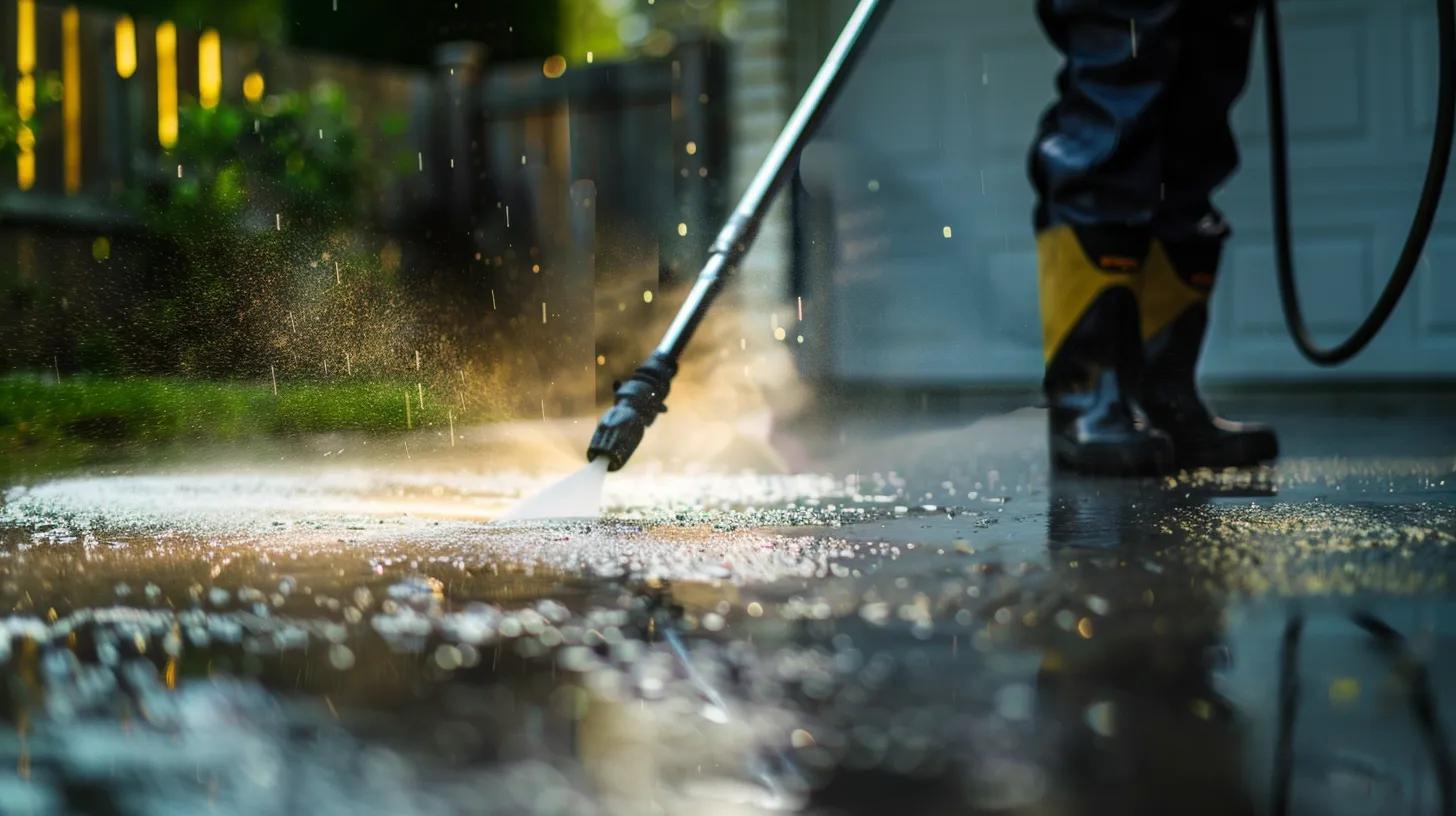
Regular maintenance through scheduled power washing is key to extending the life of your property's surfaces and preserving its appearance. Establishing a routine cleaning schedule not only maintains aesthetic appeal but also prevents the gradual buildup of contaminants that can degrade surfaces over time. The frequency of cleaning depends on factors such as surface type, local climate, and exposure to elements like pollen, bird droppings, and pollution. For instance, a driveway in a high-traffic area may require more frequent cleaning than a sheltered patio.
Determining the appropriate frequency for different surfaces is the first step toward proactive maintenance. Surfaces such as wooden decks or painted exteriors may benefit from quarterly power washing to remove dirt and prevent mold growth, while more durable surfaces like concrete or brick might only need an annual cleaning. Seasonal changes also play a significant role; during spring and fall, when weather conditions facilitate the growth of algae and mold, an extra cleaning session can help keep your property in pristine condition.
Monitoring seasonal changes and their effects is critical for planning your maintenance schedule. Warmer months and rainy seasons may require more frequent attention to prevent water damage or moisture retention, which can lead to decay over time. Additionally, the accumulation of environmental debris is often faster during certain seasons, suggesting that an adaptive cleaning schedule should be implemented. Keeping track of these seasonal patterns over time helps to optimize cleaning frequency and budget allocation.
Creating a detailed cleaning checklist provides further benefits by ensuring consistency in your maintenance routine. This checklist should include: - A review of all exterior surfaces that have been or will be cleaned. - Specific dates when each area is due for power washing. - Any special care instructions depending on the material or condition of the surface. - A record of any repairs or additional treatments applied during previous cleaning sessions.
Scheduling regular power washing reinforces preventive maintenance principles and contributes to the overall value of your property. When you establish a clear plan for routine cleaning, you can budget and schedule these services with local power washing companies, often leading to better pricing and service packages. Additionally, regular maintenance enhances the longevity of protective coatings and sealants applied during previous cleaning sessions, maintaining the finish and preserving structural integrity.
By integrating regular cleaning sessions into your property care routine, you can detect early signs of wear or damage that may require additional intervention. This holistic approach to maintenance not only ensures the cleanliness of your property but also contributes to its long-term durability and overall value. In the competitive real estate market, consistent exterior upkeep is essential for making a positive first impression on potential buyers or tenants and keeping the property in excellent condition for years to come.
Frequently Asked Questions
Q: What surfaces are best suited for high-pressure power washing? A: Non-porous surfaces like vinyl siding, metal, and certain concrete areas generally tolerate high-pressure washing. These materials are less likely to absorb water and cleaning solutions compared to porous surfaces like wood or stucco. However, even non-porous surfaces need careful pressure adjustments to avoid chipping paint or causing structural damage.
Q: How often should I schedule power washing for different parts of my property? A: The frequency of power washing depends on the type of surface and environmental exposure. For example, wooden decks typically require cleaning quarterly, while concrete driveways may only need an annual clean. High-traffic or highly exposed areas might benefit from more frequent cleaning during heavy pollen or rainy seasons.
Q: What safety measures should I consider during my power washing project? A: Safety precautions include wearing protective gear such as goggles, gloves, and non-slip boots, keeping bystanders at a safe distance, and inspecting equipment thoroughly before use. It is also important to post warning signs and conduct a risk assessment to identify and mitigate potential hazards in the cleaning area.
Q: Can power washing damage my property's surfaces? A: Yes, if not performed with the proper pressure and techniques, power washing can damage surfaces. Porous materials like wood and painted exteriors are particularly vulnerable. Properly adjusting pressure levels, selecting the right nozzle, and using appropriate cleaning solutions can minimize these risks while ensuring effective cleaning.
Q: How do eco-friendly cleaning solutions impact the power washing process? A: Eco-friendly cleaning solutions are designed to be biodegradable and non-toxic, reducing the environmental impact of runoff water. These solutions help prevent harm to local vegetation and wildlife and contribute to safer disposal practices. They may sometimes require different application methods or longer dwell times to achieve the same cleaning efficacy as traditional chemicals.
Q: Is it necessary to prepare surfaces before power washing? A: Preparation is essential to ensure effective cleaning and protect your surfaces. Clearing debris, applying protective coatings on vulnerable areas, and repairing any pre-existing damage help prevent further deterioration during the power washing process. These steps not only improve the cleaning results but also extend the lifespan of the surfaces.
Q: What techniques can improve the efficiency of my power washing project? A: Techniques that improve efficiency include selecting appropriate nozzles for different surfaces, adjusting pressure levels based on surface material, and following an efficient cleaning pattern. Integrating pre-soaking and using eco-friendly detergents can enhance cleaning performance while reducing water usage and potential damage.
Final Thoughts
Maintaining the exterior of your property through power washing is a multifaceted process that requires careful planning and precise execution. By identifying the specific surfaces that need cleaning, preparing them meticulously, and choosing the right techniques, you can achieve impressive and long-lasting results. Incorporating safety, environmental impact, and regular maintenance into your cleaning routine will protect your investment and enhance your property’s appeal. Always consult with professional power washing services to ensure that your project is carried out efficiently, safely, and sustainably.

Reliable, professional pressure washing services for pristine results.
Address:
3155 Brookeview Lane NW, Kennesaw Georgia 30152
Email:
[email protected]
Copyright | Tidal Wave Pressure Washing | 2025 | All rights reserved
designed by GIVR MEDIA

